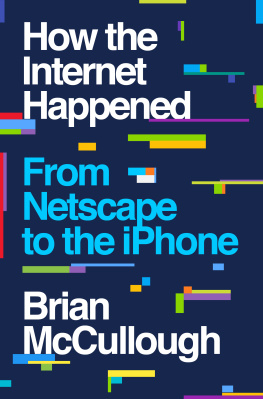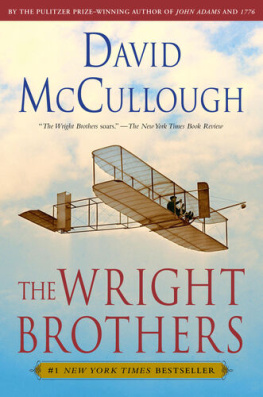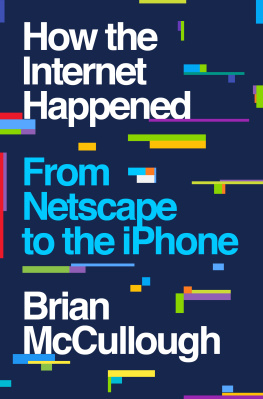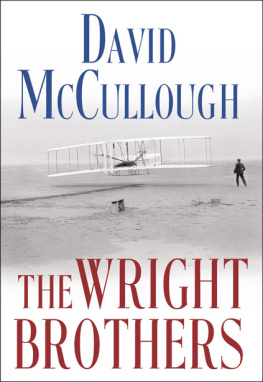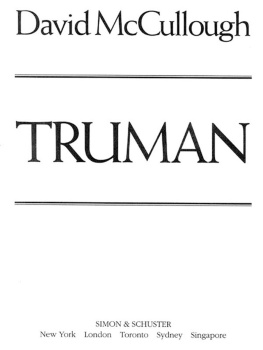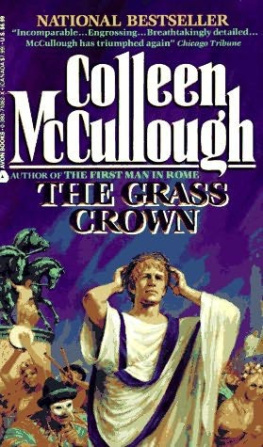
Contents
HOW THE INTERNET HAPPENED
HOW THE
INTERNET
HAPPENED
FROM NETSCAPE TO THE IPHONE
BRIAN
McCULLOUGH

LIVERIGHT PUBLISHING CORPORATION
A Division of W. W. NORTON & COMPANY
Independent Publishers Since 1923
NEW YORK LONDON
For:
My Dad, who taught me to love history And for Werner Stocker, who taught me that history was cool
W hen computers were first developed in the 1940s and 50s, it was never imagined that the common man or woman would ever need, much less have use for, them. Computers were designed for big problems: calculating missile trajectories; putting a man on the moon. Legend holds that the founder of IBM, Thomas J. Watson, once remarked, I think there is a world market for maybe five computers. This quote is probably apocryphal, but it does capture the early thinking when computers first began to serve man. They were to be rare, expensive oracles; and like the oracles of ancient times, they would be useful only in rare, exceptional cases.
Computers were expensive in the beginning. They were complicated and difficult and they were as big as a room (that is not hyperbolic phrasing; generally considered the first modern computer, the ENIAC occupied about 1,800 square feet and weighed almost 50 tons). The received wisdom of their rarefied utility affected their design; computers were not conceived to be user-friendly because it was never assumed a nonexpert user would interact with one. Histories of early computers talk about a priesthood of computer specialists who actually interacted with the machines. Say you had a mathematical or engineering problem to solve. You submitted your punch cards to the priests, and they used the computer to tease out the answer. Even when computers began to infiltrate the workplace in the 1960s through the 1980s (much to the surprise of the computer industry itself), it was still assumed that an average computer user could only achieve competency in limited, specific tasks or programs. The greater wrangling or mastery of the system at large was left to the early progenitors of what would become known as the IT guy.
And yet, the tantalizing, almost forbidden mystique of computers seduced a generation of what were considered hobbyists in the 1970s. The hobbyists wanted to master computers themselves. They wanted computers that responded to them directly, without intermediaries. They wanted personal computing. And so, they made it happen. Steve Jobs, Steve Wozniak, Bill Gates, the Homebrew Computer Clubthe hobbyists created the personal computer category (originally, they were called microcomputers) and thus, the PC Industry.
That still wasnt quite enough to make computers friendly to the average person. Almost a decade into the PC era, the industry remained trapped in the paradigm of the command line. If you sat in front of a computer, you would see a blinking cursor and would need to type something to make the machine do anything for you. What would you need to type? Well, see, thats the point: it was functional inscrutability that continued to make computers so abstruse. In the era of the command line, you almost needed to have read the manual cover-to-cover or have previously mastered a computer language even to use the damn things. You had to know how to use a computer before you could use a computer.
This problem was solved by the invention of the GUI, or graphical user interface. Computers were humanized by graphics, by colors, by friendly icons and drop-down menus and a cute little tool called a mouse. Now when you sat in front of a computer, you could grab the mouse and justclick. You didnt have to know anything beforehand. You could learn how to use the machine by using it. Invented by Xerox, popularized by Apple Computers and the Macintosh, and then mainstreamed by Microsoft and its Windows operating system, the GUI was the evolutionary leap that would eventually make computers friendly to the average user.
But even when computers began to enter our everyday lives, our offices, our homes, they still were a bit esoteric. You might use a word processor at your job. Your kids might play computer games
THE INTERNET, AND ESPECIALLY the World Wide Web, finally brought computers into the mainstream. The Internet is the reason that computers actually became useful for the average person. The Internet is the thing that made a computer something you check in with daily, even hourly. And that is what this book is about: how the web and the Internet allowed computers to infiltrate our everyday lives. This is not a history of the Internet itself, but rather, a history of the Internet Era, that period of time from roughly 1993 through 2008 when computers and technology itself stopped being esoteric and started becoming vital and indispensable. It is about great technologies and disruptions and entrepreneurs. It is about how we allowed these technologies into our lives, and how these technologies changed us.
LIKE COMPUTERS, THE INTERNET was not designed with you and me in mind.
Computers were first hooked together in a meaningful way in 1969. This was the ARPANET, the grandfather of the Internet, and (mostly) true to legend, it was birthed by a Cold Warera alliance of the United States military and the academic-industrial complex. Funded by DARPA, the Defense Advanced Research Projects Agency, the Internets first four connections, or nodes, were all at academic research centers: the University of California, Los Angeles; the Stanford Research Institute; the University of California, Santa Barbara; and the University of Utah.
The ARPANET was a blue-sky research project that, ostensibly, would allow for greater (and more resilient) communications among decision-makers during a nuclear strike. While they sold their project to the generals this way, the academics behind the ARPANET then spent the next twenty years evolving the network into a system that better suited their own needs: a distributed, nonhierarchical computer and communications network that facilitated discussion and exchange among the research and scientific community. The ARPANET evolved into the Internet we recognize today not as a populist or mass-market communications system, but as an electronic playground where a priesthood of academics could play and exchange ideas.
This elitist focus showed in the Internets maturity. All of the various Internet protocols that developed, from the most obvious, such as FTP (File Transfer Protocol) and TCP/IP (the basic building block of the Internet itself), to the most recent and seemingly sophisticated, such as newsgroups, Gopher (the first true Internet search) and even emailall were complex to set up, unfriendly to nonexpert users, and, frankly, boring and utilitarian. Even as computers became personal, even as computing itself was becoming colorful and democratized, the Internet remained stubbornly aloof, sequestered in the ivory towers of academia.
The Internet, in short, needed its own GUI revolution, that application/user interface innovation that would make the Internet user-friendly just as the graphical user interface had done with computing itself. The World Wide Web arrived just at the right time, and provided this exact paradigm shift just when it was needed.
The web came in 1990, just as Windows was beginning to take computers into the majority of the worlds homes and offices, and just as the computer mouse and the graphical icon were making computing point-and-click intuitive for everyday people. The web lived in this world. You navigated the web with a mouse, you clicked on links, and the whole thing moved with the innate, logical simplicity of how human thought seems to work: jumping from one idea or association to another, flowing backward and forward in the direction of idea and inspiration, reference and retort. The web took the fundamental concept of the Internet (connecting computers together) and made it manifest through the genius of the hyperlink. One website linked to another. One idea linked to another. This metaphor of the link made the whole conceptual idea of the Internet, of linking computers together, of linking peoples minds together, of linking human thought together, finally and wonderfully real.
Next page
